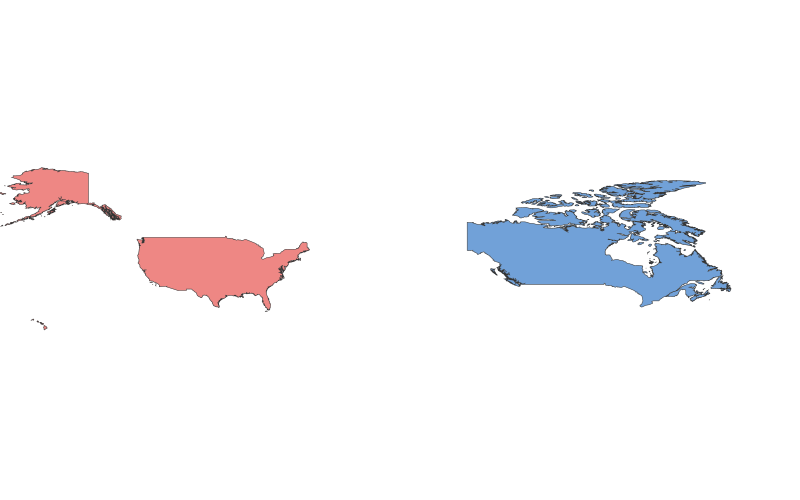United States vs. Canada: A Geographical Comparison

United States vs. Canada: A Geographical Comparison
Comparison Table
| Category | United States | Canada |
|---|---|---|
| Location | Located in North America, bordered by Canada to the north and Mexico to the south. | Located in northern North America, bordered by the U.S. to the south. |
| Size | Approximately 9.8 million square kilometers (3rd largest country). | Approximately 9.98 million square kilometers (2nd largest country). |
| Climate | Diverse: Arctic in Alaska, tropical in Hawaii, temperate in most regions. | Predominantly cold winters, especially in the north; milder in the south. |
| Natural Resources | Abundant: oil, natural gas, coal, timber, minerals. | Rich in oil, natural gas, timber, freshwater, and minerals. |
| Urban Development | Highly urbanized, with major cities like New York, Los Angeles, and Chicago. | Less urbanized; major cities include Toronto, Vancouver, and Montreal. |
| Transportation | Extensive highway and railway networks; busy air travel hubs. | Relies heavily on road and rail; air travel critical for remote areas. |
Description of the Two Countries
United States
The United States is a vast and diverse country with a rich history shaped by indigenous cultures, European colonization, and waves of immigration. Its economy is the largest in the world, driven by technology, finance, manufacturing, and agriculture. Culturally, the U.S. is a melting pot, influenced by its multicultural population. Geographically, it boasts everything from deserts to rainforests, and its cities are global hubs for business and entertainment.
Canada
Canada is known for its stunning natural landscapes, including vast forests, prairies, and the Rocky Mountains. It has a smaller population compared to the U.S., with a strong emphasis on multiculturalism and bilingualism (English and French). Canada's economy is resource-based, with significant contributions from oil, mining, and forestry. Its cities are known for high quality of life, and the country is often recognized for its progressive policies and welcoming attitude toward immigrants.
Both countries share a long border and many cultural similarities but differ significantly in population density, climate, and economic focus.